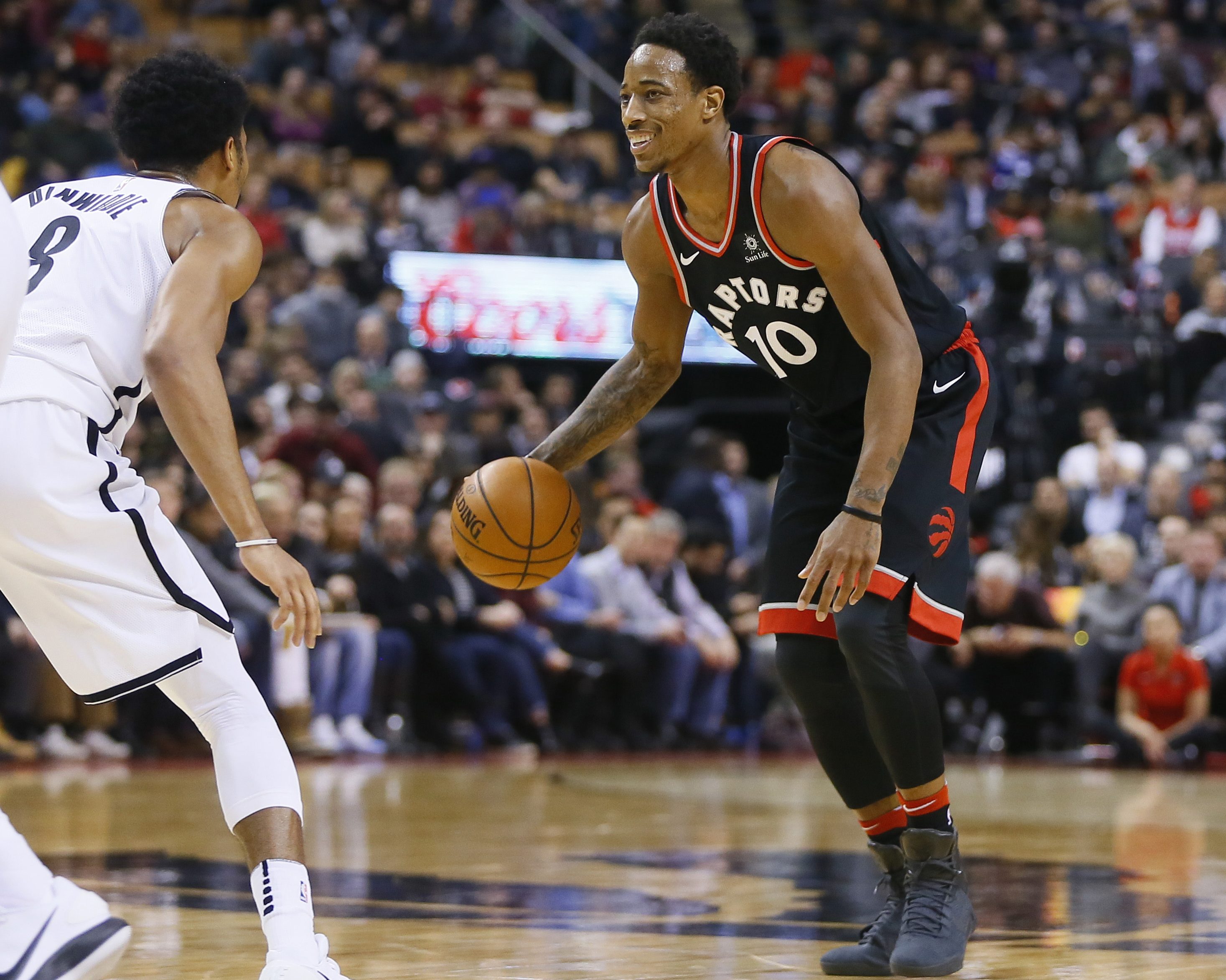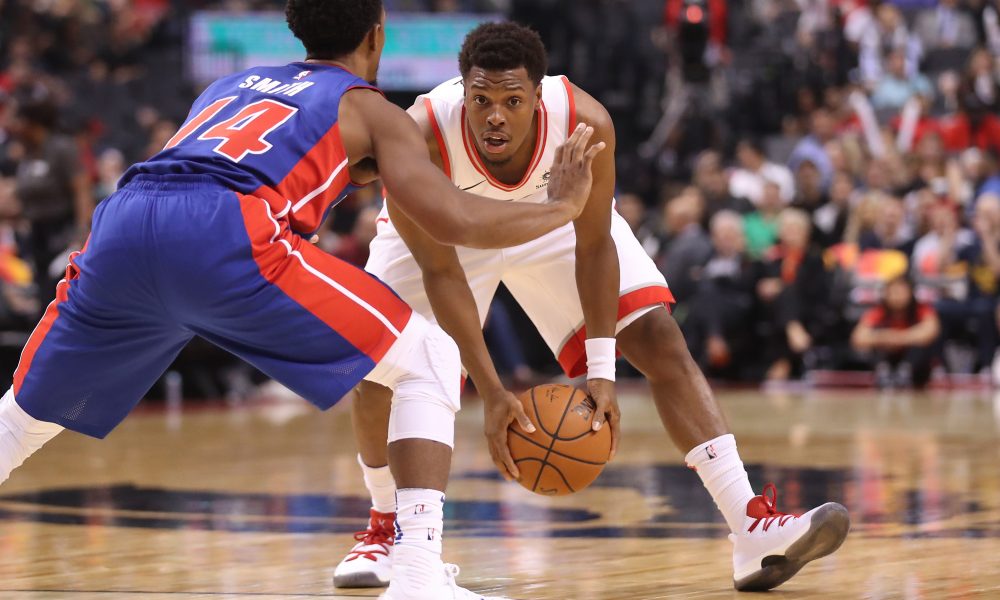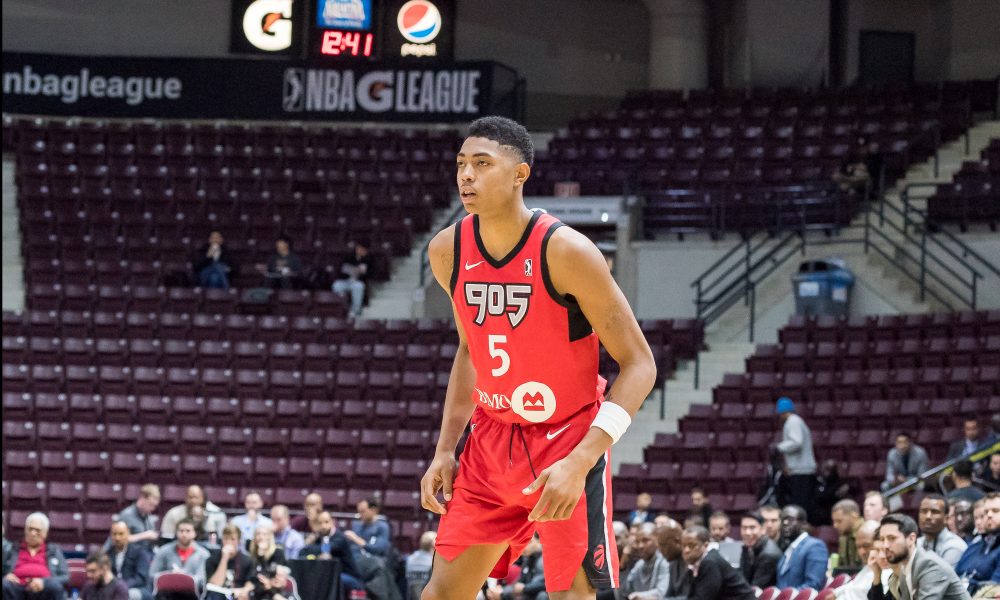Raptors Playbook: Double Drag Continuity Series
Over at the Raptors Playbook YouTube channel (@RaptorsPlaybook on Twitter), I am breaking down the X’s & O’s of the Toronto Raptors. This week, we’ll focus on their Double Drag Continuity Series – a free flowing sequence that flows between options seamlessly. Watch the video embedded below alongside the summary written, and remember to follow and subscribe to never miss out on a video.
Double Drag Staggered Screen Option – Starting at 0:00
The action that triggers the entire sequence for this play is a Double Drag Screen. While the personnel for this play is largely interchangeable, the “5” being the second screener is the constant (for reasons that will become increasingly clear as the play progresses). Besides that, the ball handler can be any capable guard or wing on the court, while two other perimeter players are slotted in each corner.
After the ball handler has dribbled their way into the middle of the floor, the two screeners continue their path to the strong side wing and set an off-ball staggered screen for the wing. The wing will be passed the ball after they have used both screens, as an advantage has been created with two players needing to momentarily guard one player.
If they don’t guard the wing coming off of the staggered screen, enough space has been created to shoot a 3-pointer or attack an aggressive closeout. If the second screen defender jumps out to the ball on the catch, the screener is free to dive to the rim while the first screener pops to the perimeter – creating an impromptu single-side bump.
Double Drag Twirl Option – Starting at 0:54
While the staggered screen can be a dangerous option, it can stall out quickly with too much use. To combat this, the Raptors will sometimes engage in “Twirl” action – as the wing player slotted in the corner brushes off the first staggered screener and exits to the weak side of the court. This cut/pseudo-screen can create enough of an opportunity for the low screener to make use of the higher screen.
The Raptors make great use of their interchangeable personnel for this action, as CJ Miles can be the wing player, a nominal small forward, using a staggered screen on one possession, while slotting in the power forward’s role the next and utilizing the Twirl to confuse non-conforming defensive coverages.
With the Raptors often having several effective ball handlers on the court at a time, experimentation with Lowry as the low-screener to utilize the Twirl action could be deadly, as he can be an effective screener, as well as an elite catch-and-shoot player.
Double Drag Twirl, DHO & Ball Screen – 1:28
While that previous action can often create open perimeter opportunities for the Raptors’ shooters, it is not in the spirit of the culture reset to just have a couple of actions that can be snuffed out. Rather, the Raptors new offensive philosophy encourages secondary and tertiary offensive players – those that would typically be relegated to strictly finishing plays in prior years – to shoulder some playmaking responsibilities. Whether it be Miles using the Twirl action and deciding the shot is not as open as needed, or one of Serge Ibaka, Pascal Siakam, OG Anunoby filling that slot, the Raptors can simply catch the ball and engage in a DHO (dribble hand-off) before the primary ball handler surges back to the sideline and utilize a ball screen that contourts the defense from side-to-side before breaking through to the paint.
This type of continuity and motion encourages passing up a good shot for a great one, as well as allowing the supporting offensive players to make decisions and reads.
Another key feature of this play is that the defense has had to run ragged through 2-3 strenuous actions before this final point has occurred. While a defense might be able to fundamentally defend a handful of actions correctly, bending this much without breaking is a difficult task for 5 players when the offense just needs one misstep to score.




